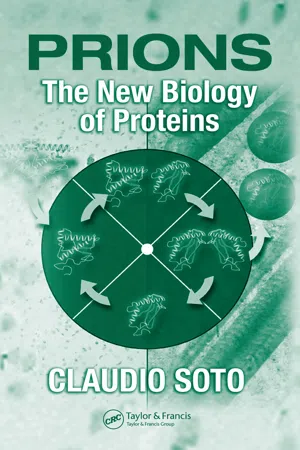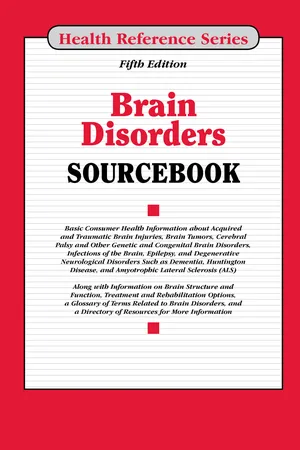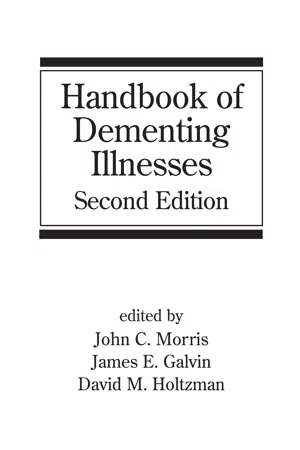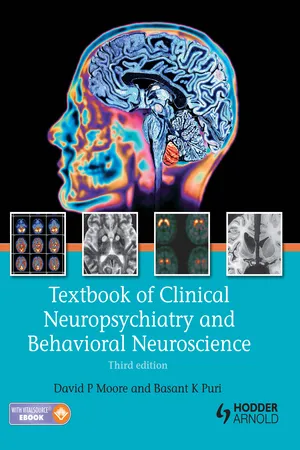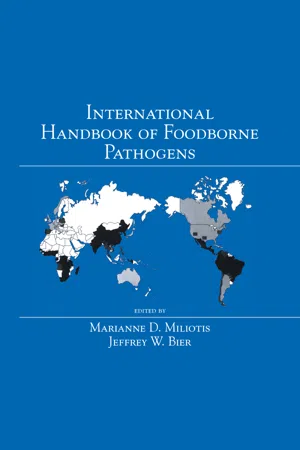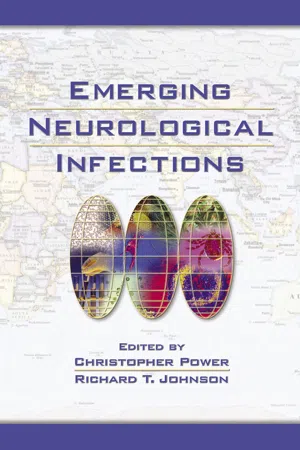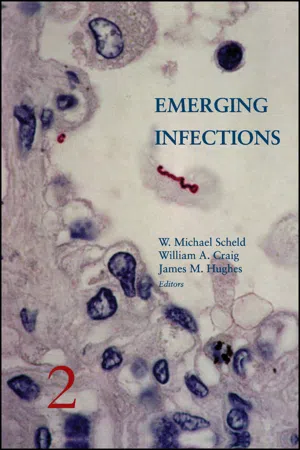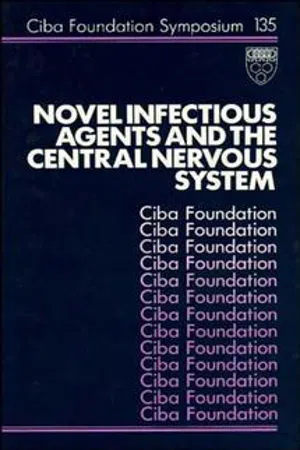Biological Sciences
Creutzfeldt-Jakob Disease
Creutzfeldt-Jakob Disease (CJD) is a rare, degenerative brain disorder that leads to rapid mental deterioration and loss of physical control. It is caused by abnormal infectious proteins called prions. Symptoms include memory loss, personality changes, and impaired coordination. CJD has no cure and is ultimately fatal, with most patients succumbing to the disease within a year of onset.
Written by Perlego with AI-assistance
Related key terms
1 of 5
12 Key excerpts on "Creutzfeldt-Jakob Disease"
- eBook - ePub
Palliative Care Within Mental Health
Care and Practice
- David Cooper, Jo Cooper(Authors)
- 2018(Publication Date)
- CRC Press(Publisher)
Chapter 12Creutzfeidt-Jakob disease and palliative care
Kay de VriesIntroduction
This chapter discusses palliative care for people experiencing Creutzfeldt-Jakob Disease (CJD) and their families. A background to CJD is presented along with a discussion on diagnosis, disease trajectory and the experiences of the person with CJD at the end-of-life. The chapter also addresses the risk of contamination from CJD, issues and challenges related to stigma, genetic testing and counselling, bereavement and loss, and advance care planning.Creutzfeldt-Jakob Disease (CJD)
CJD is a rare and fatal neurodegenerative disease first described in the 1920s. It has historically been classified within the dementia syndromes because the symptoms that occur over the disease progression contain all of those that are experienced in other dementia syndromes, but at an accelerated pace. It is recognised as both a dementia syndrome and an acute neurological illness. CJD belongs to a group of diseases known as transmissible spongiform encephalopathies (TSE) that are known to occur in both humans and animals. The progress of multifocal encephalopathies is aggressive and brain damage that occurs is characterised by the spongy appearance of brain tissue seen under a microscope. It is also referred to as prion disease, an acronym for a proteinaceous infectious agent. The prion theory suggests that the infective agent of CJD is only composed of protein and does not contain nucleic acid, which would be necessary if the agent was a conventional virus. The transmittable agent is either genetic or an abnormal form of prion protein that causes aggregates of cellular protein to accumulate in the brain. The exact process that occurs that leads to brain damage from original inoculation/contamination is incompletely understood.1 , 2 , 3 , 4Four types of CJD have been identified:- iatrogenic
- inherited
- sporadic
- variant CJD.
- eBook - PDF
Prions
The New Biology of Proteins
- Claudio Soto(Author)
- 2005(Publication Date)
- CRC Press(Publisher)
1 chapter one Human and animal diseases: clinical symptoms, epidemiology, and neuropathology Prion diseases are a closely related group of fatal neurodegenerative disor-ders that affect humans and other mammals [Collinge, 2001]. They have also been called transmissible spongiform encephalopathies (TSEs), slow virus diseases, and subacute spongiform encephalopathies. A unique feature of these diseases is that they can have three different origins: sporadic, inher-ited, and infectious. The clinical, epidemiological, and neuropathological features can be very different in each of the diseases, but they are classi fi ed together because the key molecular event appears to be the same, i.e., the misfolding of the prion protein [Collinge, 2001; Prusiner, 1998]. This chapter provides an overview of the main characteristics of different forms of prion diseases, describing their origin, clinical symptoms, prevalence, and neuro-logical alterations. 1.1 Human diseases Creutzfeldt-Jakob Disease (CJD) is the most common form of TSE in humans. The fi rst description of the disorder is attributed to H.G. Creutzfeldt (1920), although by current diagnostic criteria the case reported by Dr. Creutzfeldt would not classify as CJD. In 1921, A. Jakob described four similar cases, and at least two of them had clinical features suggestive of CJD. Since then, CJD cases have been recorded all over the world, and it is now recognized that the disease has a worldwide distribution [Johnson and Gibbs, Jr., 1998]. CJD is a rare disease with an estimated incidence rate of about one new case per million people each year. Higher rates have been reported among Libyan Jews (26 cases per million), and spatial clusters have been identi fi ed in areas 2 Prions: The New Biology of Proteins of Slovakia, Hungary, England, U.S., and Chile [Johnson and Gibbs, Jr., 1998]. - eBook - PDF
- Angela Williams(Author)
- 2018(Publication Date)
- Omnigraphics(Publisher)
It affects approximately one in a million people around the world and about 200 people in the United States. CJD usually appears in more advanced stages of life and main-tains a rapid trajectory. Typically, symptoms begin around the age of 60 and 90 percent of patients die within a year. In the initial stages of the disease, patients suffer from memory failure, behavioral changes, lack of coordination and visual disturbances. As the disease progresses, mental deterioration becomes pronounced and involuntary movements, blindness, weakness of the extremities and coma may occur. There are three main categories of CJD: In sporadic CJD, the disease appears even when the person does not have known risk factors for the disease. This is the most common type of CJD, occurring in at least 85 percent of cases. In hereditary CJD, the person has a family history of the disease or positive genetic mutation tests associated with CJD. About 5–10 percent of CJD cases in the United States are hereditary. This chapter includes text excerpted from Creutzfeldt-Jakob Disease Fact Sheet, National Institute of Neurological Disorders and Stroke (NINDS), May 10, 2017. 494 Brain Disorders Sourcebook, Fifth Edition In acquired CJD, the disease is transmitted by exposure to brain tissue or the nervous system, commonly by certain medical procedures. There is no evidence that CJD is contagious through casual contact with a CJD patient. Since CJD was first described in the year 1920, less than 1 percent of cases have been CJD acquired. CJD belongs to a family of diseases of humans and animals known as transmissible spongiform encephalopathies (TSE). Spongiform refers to the characteristic appearance of infected brains, which fill with holes or holes until they resemble sponges under a microscope. CJD is the most common of the known human transmissible spongi-form encephalopathies (TSEs). Other human TSEs include kuru, fatal familial insomnia (IFF) and Gerstmann-Straussler-Scheinker disease (GSS). - eBook - PDF
Neuropathology of Neurodegenerative Diseases
A Practical Guide
- Gabor G. Kovacs(Author)
- 0(Publication Date)
- Cambridge University Press(Publisher)
Ann Neurol 1994; 35: 513–29. 23. National Creutzfeldt–Jakob Disease Research & Surveillance Unit. Data and Reports. 2014. http:// www.cjd.ed.ac.uk/data.html. (Accessed July 28, 2014). 24. World Health Organization. Infection Control Guidelines for Transmissible Spongiform Encephalopathies. 2003. http://who.int/csr/resources/ publications/bse/whocdscsraph2003.pdf . (Accessed January 20, 2014). 25. H. Budka, M. W. Head, J. W. Ironside, et al. Sporadic Creutzfeldt–Jakob Disease. In: D. W. Dickson, R. O. Weller (eds). Neurodegeneration: the Molecular Pathology of Dementia and Movement Disorders. Oxford, Wiley-Blackwell, 2011; 322–35. 26. P. Parchi, R. Strammiello, S. Notari, et al. Incidence and spectrum of sporadic Creutzfeldt–Jakob disease variants with mixed phenotype and co-occurrence of PrPSc types: an updated classification. Acta Neuropathol 2009; 118: 659–71. 27. P. Gambetti, Z. Dong, J. Yuan, et al. A novel human disease with abnormal prion protein sensitive to protease. Ann Neurol 2008; 63: 697–708. 28. W. Q. Zou, G. Puoti, X. Xiao, et al. Variably protease- sensitive prionopathy: a new sporadic disease of the prion protein. Ann Neurol 2010; 68: 162–72. 29. P. Parchi, P. Gambetti, S. Capellari. Genetic Creutzfeldt–Jakob disease. In: D. W. Dickson, R. O. Weller (eds). Neurodegeneration: the Molecular Pathology of Dementia and Movement Disorders. Oxford, Wiley-Blackwell, 2011; 336–55. 30. B. Ghetti, F. Tagliavini, G. G. Kovacs, P. Piccardo. Gerstmann–Str¨ aussler–Scheinker disease. In: D. W. Dickson, R. O. Weller (eds). Neurodegeneration: the Molecular Pathology of Dementia and Movement Disorders. Oxford, Wiley-Blackwell, 2011; 364–77. 31. P. Parchi, S. Capellari, P. Gambetti. Fatal familial and sporadic insomnia. In: D. W. Dickson, R. O. Weller (eds). Neurodegeneration: the Molecular Pathology of Dementia and Movement Disorders. Oxford, Wiley-Blackwell, 2011; 346–9. 32. J. W. Ironside, R. S. G. Knight, M. W. Head. Iatrogenic Creutzfeldt–Jakob disease. - eBook - PDF
- John Morris, James E. Galvin, David M. Holtzman, John Morris, James E. Galvin, David M. Holtzman(Authors)
- 2006(Publication Date)
- CRC Press(Publisher)
15 Prion Diseases and Dementia James A. Mastrianni Center for Comprehensive Care and Research on Memory Disorder and Department of Neurology, University of Chicago, Chicago, Illinois, U.S.A. INTRODUCTION The prion diseases (PrD) are a group of unusual neurodegenerative disorders that affect both humans and animals, are associated with a variety of phenotypes, and are transmissible. The earliest description of PrD was that of Creutzfeldt and then Jakob in the early 1900s (1,2) as a progressive dementia associated with gait abnormalities and extensive vacuolation and astrocytic gliosis of the brain. In the mid-1950s, while studying primitive cultures in the Highlands of New Guinea, Carleton Gajdusek recognized and described a disease the Fore people, living in this region, called “kuru.” Sufferers of kuru developed a progressive gait ataxia, unusual behavior, and a relatively rapid progression to death. Gajdusek’s studies suggested that this disease was the result of a transmissible agent carried within the brain of the affected individual that was horizontally transmitted during rituals that involved cannibalism. Women and children were most affected by the disease, likely due to their greater contact with infectious tissue during both the preparation of the feast and the ritualistic ceremony. Pathologic examination of the kuru brain revealed the same pattern of vacuolation (also called spongiform change) that was observed in the disease described by Creutzfeldt and Jakob. Most importantly, however, this same pathology was astutely recognized by the veterinarian William Hadlow as the same pathology present in scrapie, a known transmissible disease of sheep associated with similar features of gait dysfunction, behavioral changes, and a rapid progression to death. It was natural to speculate that Creutzfeldt-Jakob Disease (CJD) and kuru were similarly transmissible, which was confirmed in the mid-1960s (3,4). - David Moore, Basant Puri(Authors)
- 2012(Publication Date)
- CRC Press(Publisher)
The pathogenesis of transmissible spongiform encephalopathy an ultrastructural study. Brain 1982; 105 :755 86. Belay ED, Sejvar JJ, Shieh WJ et al. Variant Creutzfeldt Jakob disease death, United States. Emerg Infect Dis 2005; 11 :1351 4. Bernouilli C, Siegfried J, Baumgartner G et al. Danger of accidental person to person transmission of Creutzfeldt Jakob disease by surgery. Lancet 1977; 1 :478 9. Billette de Villemeur T, Beuavais P, Gourmelon M et al. Creutzfeldt Jakob disease in children treated with growth hormone. Lancet 1991; 337 :864 5. Billette de Villemeur T, Beslys J-P, Pradel A et al. Creutzfeldt Jakob disease from contaminated growth hormone extracts in France. Neurology 1996; 47 :690 5. Binelli S, Agazzi P, Giaccone G et al. Periodic electroencephalogram complexes in a patient with variant Creutzfeldt Jakob disease. Ann Neurol 2006; 59 :423 7. Bone I, Belton L, Walker AS et al. Intraventricular pentosan polysulphate in human prion diseases: an observational study in the UK. Eur J Neurol 2008; 15 :458 64. Brandel JP, Heath CA, Head MW et al. Variant Creutzfeldt-Jacob disease in France and the United Kingdom: Evidence for the same agent strain. Ann Neurol 2009; 65 :249 56. Brandner S, Whitfield J, Boone K et al. Central and peripheral pathology of kuru: pathological analysis of a recent case and comparison with other forms of human prion disease. Phil Trans R Soc Lond B Biol Sci 2008; 363 :3755 63. Brown P, Cathala F, Castaigne P et al. Creutzfeldt Jakob disease: clinical analysis of a consecutive series of 230 neuropathologically verified cases. Ann Neurol 1986; 20 :597 602. Brown P, Goldfarb LG, Brown WT et al. Clinical and molecular genetic study of a large German kindred with Gerstmann Straussler Scheinker syndrome. Neurology 1991; 41 :375 9. Brown P, Gibbs CJ, Rodgers-Johnson P et al. Human spongiform encephalopathy: the National Institutes of Health series of 300 cases of experimentally transmitted disease.- eBook - ePub
- Marianne D. Miliotis, Jeffrey W. Bier(Authors)
- 2003(Publication Date)
- CRC Press(Publisher)
40
Variant Creutzfeldt-Jakob Disease and Bovine Spongiform Encephalopathy
Andrea S. VicariLouisiana Office of Public Health, Infectious Diseases, New Orleans, Louisiana, U.S.A.William D. HuestonCenter for Animal Health and Food Safety, University of Minnesota, St. Paul, Minnesota, U.S.A.Dominic A. TravisLincoln Park Zoo, Chicago, Illinois, U.S.A.I. BACKGROUND
Bovine spongiform encephalopathy (BSE) is a neurological disease of adult cattle with an insidious onset and progressive, invariably fatal course. It was first recognized in Great Britain in November 1986 (1 ), where it surged to epizootic levels over the following decade (2 ). On March 20, 1996, a new form of human spongiform encephalopathy, variant Creutzfeldt-Jakob Disease (vCJD), was announced in the British Parliament. Although there was no direct reference to an alimentary pathway of transmission, exposure of humans to BSE-infected tissue prior to 1989 was considered the likeliest explanation (3 ). Soon thereafter, a scientific paper describing the disease was published by Will et al. (4 ). Evidence is mounting that this human disease is linked to the occurrence of BSE in cattle (5 –7 ).Both BSE and vCJD are members of a group of animal and human diseases called transmissible spongiform encephalopathies (TSEs). These diseases share several similarities. They are caused by an unconventional, infectious agent and are characterized by progressive microscopic degeneration of the brain. Clinically, neurological signs predominate, and the course is always fatal with no known effective treatment options. Finally, an immunological response is missing. Other animal TSEs include scrapie in sheep and goats, transmissible mink encephalopathy, and chronic wasting disease of mule deer and elk. Notably, scrapie was first reported over 200 years ago (8 ) and is commonly considered the prototype of all the TSEs. The causal agent of BSE has been shown to infect a wide spectrum of animal species. In particular, cases following natural transmission have been reported in domestic cats and zoo animals. Other than vCJD, four forms of human TSE are known: classical Creutzfeldt-Jakob Disease (sporadic, familial, and iatrogenic), kuru, Gerstmann-Straussler-Scheinker syndrome, and fatal familial insomnia (9 –11 ). A sporadic form of fatal familial insomnia has been recently reported (12 - Claude G Manoli, Richard C Ragaini(Authors)
- 2005(Publication Date)
- World Scientific(Publisher)
4. TRANSMISSIBLE SPONGIFORM ENCEPHALOPATHY: PRIONS This page intentionally left blank This page intentionally left blank Creutzfeldt-Jakob Disease AND BLOOD TRANSFUSION Neurosurgery Depth electrodes Corneal transplant Dura mater Human growth hormone Human PROFESSOR R.G. WILL National CJD Surveillance Unit, University of Edinburgh, Edinburgh, Scotland period (years) 4 1.6 Visual/cerebellar/dementia 2 1.5 Dementia 3 15.5= Dementia 136 6b Visual/cerebellar/dementia 162 12b Cerebellar 5 13 Cerebellar Creutzfeldt-Jakob Disease (CJD) is a member of a group of diseases known as prion diseases or transmissible spongiform encephalopathies (TSEs). The very fact that these conditions are experimentally transmissible raises the spectre of accidental transmission and CJD has been transmitted iatrogenically in the course of medical and surgical treatments, including via pituitary growth hormone and human dura mater grafts] (table 1). In prion diseases the level of tissue infectivity varies, with the central nervous system carrying very high titres of infectivity and peripheral lymphoid tissues lower levels. In some tissues or fluids such as blood, infectivity has been detected only in experimental models and not in natural disease. Until recently, all cases of iatrogenic CJD have involved transfer from person to person of infectivity from high titre tissues and the transmission of sporadic CJD through blood transfusion has not been identified despite a number of, largely epidemiological, studies[']. Variant CJD (vCJD) is a new disease, which is caused by human infection with the agent of bovine spongiform encephalopathy (BSE)13]. In contrast to sporadic CJD, the lymphoid tissues in vCJD, such as spleen and lymph nodes, contain infectivity, raising the possibility that blood in vCJD might pose a greater risk of onward transmission of infection. TABLE 1 TOTAL CASES OF IATROGENIC CJD WORLD-WIDE I Mode I Cases (n) 1 Mean incubation I Clinical I gonadotrophin I Range 1.530 years.- eBook - PDF
- Christopher Power, Richard T. Johnson, Christopher Power, Richard T. Johnson(Authors)
- 2005(Publication Date)
- CRC Press(Publisher)
4 Prion Diseases and Dementia James A. Mastrianni The University of Chicago, Chicago, Illinois, U.S.A. 1. INTRODUCTION The prion diseases (PrD) are a group of unusual neurodegenerative disorders that affect both humans and animals, are associated with a variety of pheno-types, and are transmissible. The earliest description of PrD was that of Creutzfeldt and then Jakob in the early 1900s (1,2) as a progressive dementia associated with gait abnormalities and extensive vacuolation and astrocytic gliosis on pathologic review of the brain. In the mid-1950s, while studying primitive cultures in the Highlands of New Guinea, Carleton Gajdusek recog-nized and described a disease the Fore people, living in this region, called “kuru.” Sufferers of kuru developed a progressive gait ataxia, unusual behav-ior, and a relatively rapid progression to death. Gajdusek’s studies suggested that this disease was the result of a transmissible agent carried within the brain of the affected individual that was horizontally transmitted rituals that involved cannibalism. Women and children were most affected by the disease, due likely to their greater contact with infectious tissue during both the prepa-ration of the feast and the ritualistic ceremony. Pathologic examination of the kuru brain revealed the same pattern of vacuolation (also called spongiform change) that was observed in the disease described by Creutzfeldt and Jakob. Most importantly, however, this same pathology was astutely recognized by the veterinarian William Hadlow as the same pathology present in scrapie, a known transmissible disease of sheep associated with similar features of gait dysfunction, behavioral changes, and a rapid progression to death. It was nat-ural to speculate that CJD (Creutzfeldt–Jakob disease) and kuru were similarly transmissible, which was confirmed in the mid-1960s (3,4). These results led 77 to the recognition of several other transmissible spongiform encephalopathies (TSEs). - eBook - PDF
- W. Michael Scheld, William A. Craig, James M. Hughes, W. Michael Scheld, William A. Craig, James M. Hughes(Authors)
- 1998(Publication Date)
- ASM Press(Publisher)
The leading etiologic hypothesis for these diseases is that they result from the accumulation in affected brains of the transmissible agent, which consists of an abnormal form of a host-encoded glycoprotein. In 1982, this transmissible agent was named a "prion" because of its novel, proteinaceous, infectious properties that distinguished it from viruses, plasmids, and viroids (30). Since 1968, when CJD in humans was first reported to be transmissible to chim- panzees, there has been continued speculation about the possibility of natural trans- mission of this disease to account for the over 85% of CJD cases that appear to occur sporadically with no known source of infection (20). However, no natural Lawrence B. Schonberger • Division of Viral and Rickett sial Diseases, National Center for Infectious Diseases, Ce nters for Disease Control and Prevention , Mail Stop A39, 1600 Clifton Road NE, Atlanta, GA 30333. 1 2 Sc:honbcrgt:r route for transmission of CJD has been convincingly demonstrated. To explain both the si milar incidence of CJD (about one case per million population per year) found in many different geographic areas of th e world and the absence of appare nt en· viron me nt al risk factors, prominent investigators have hypothesized that the vast majori ty of CJD cases (Le., those classified as sporadic wi th no known environ· me nt al sou rce of inf ec ti on) result from de novo spontaneous generation of the self· re pli cating pri on protein . Further, this process may be faci litated by an occasional somati c mutation that increases the usually rare stochastic flu c tu ations in the s tru c· ture of th e normal cellular form of the prion prote in (18. 29). THE BSE EPIZOOTIC IN THE UN ITED KI NGDOM SSE was fir st diagnosed as part of an epizootic in th e United Kingdom in November 1986 (37). - eBook - PDF
Prions
A Challenge for Science, Medicine and the Public Health System
- H. F. Rabenau, J. Cinatl, H. W. Doerr, A. Schmidt, H. Herwald(Authors)
- 2004(Publication Date)
- S. Karger(Publisher)
Neuropathological examination is required for unequivocal confirmation. References 1 Katscher F: It’s Jakob’s disease, not Creutzfeldt’s. Nature 1998;393:11. 2 Meyer A, Leigh D, Bagg CE: A rare presenile dementia associated with cortical blindness (Heidenhain’s syndrome). J Neurol Neurosurg Psychiatry 1954;17:129–133. 3 Gibbs CJ, Gajdusek DC, Asher DM, Alpers HP, Beck E, Daniel PM, Matthews WB: Creutzfeldt-Jakob Disease (spongiform encephalopathy): Transmission to the chimpanzee. Science 1968;161: 388–389. 4 National CJD Surveillance Unit, London School of Hygiene & Tropical Medicine: Creutzfeldt-Jakob Disease Surveillance in the United Kingdom. Ninth Annual Report 2000. 5 National CJD Surveillance Unit. London School of Hygiene & Tropical Medicine. Tenth Annual Report 2002. 6 Will RG, Alperovitch A, Poser S, Pocchiari M, Hofman A, Mitrova E et al: Descriptive epidemiology of Creutzfeldt-Jakob Disease in six European countries, 1993–1995. Ann Neurol 1998;43:763–767. 7 Wientjens D, Davanipour Z, Hofman A, Kondo K, Matthews WB, Will RG, van Duijn CM: Risk factors for Creutzfeldt-Jakob Disease: A reanalysis of case-control studies. Neurology 1996;46: 1287–1291. 8 Wilson K, Code C, Ricketts MN: Risk of acquiring Creutzfeldt-Jakob Disease from blood transfusions: Systematic review of case-control studies. BMJ 2000;321:17–19. 9 Collins S, Law MG, Fletcher A, Boyd A, Kaldor J, Masters CL: Surgical treatment and risk of sporadic Creutzfeldt-Jakob Disease: A case-control study. Lancet 1999;353:693–697. 10 Ward HJT, Everington D, Croes EA, Alperovitch A, Delasnerie-Laupretre N, Zerr I et al: Sporadic Creutzfeldt-Jakob Disease and surgery: A case-control study using community controls. - Gregory R. Bock, Joan Marsh, Gregory R. Bock, Joan Marsh(Authors)
- 2008(Publication Date)
- Wiley(Publisher)
We suggest that CJD agents are either constituted by retroviral-like nucleic acids or interact with endogenous retroviral sequences to elicit a slowly progressive disease of the central nervous system. Several overlapping properties between infectious CJD and ‘non- infectious’ dementias, such as Alzheimer’s disease, implicate potential common pathogenic mechanisms. I988 Novel infectious agents and the central nervous system. Wiley, Chichester (Ciba Foundation Symposium 135) p 117-134 Disparate hypotheses concerning the nature of the ‘unconventional’ agents are possible depending on which data are chosen for citation. On the one hand, biological and virological data are most compatible with a conventional viral assembly, i.e. a protein-nucleic acid complex (Manuelidis & Manuelidis 1986). On the other hand, physicochemical studies support the concept of an infectious moiety that lacks significant nucleic acid (Prusiner 1987). In this paper we consider recent compelling biological data in Creutzfeldt-Jakob Disease (CJD) that emphasize the requirement for an agent-specific nucleic acid, and we propose a model that 1) encompasses the array of virological and biochemical evidence accumulated to date, 2) is experimentally testable, and 3) has potential implications for the aetiology and mechanisms involved in the more common human dementias such as Alzheimer’s disease (AD). A few well known but salient biological properties of the unconventional viral diseases are worth reiterating, as they clearly imply an entity that 117 118 Manuelidis et al contains significant nucleic acid. Scrapie, shown as early as 1936 to be an infectious disease by inoculation studies by CuillC and Chelle, replicates with a typical exponential progression (Kimberlin & Walker 1986, Czub et a1 1986). These findings are difficult to reconcile with known properties of proteins.
Index pages curate the most relevant extracts from our library of academic textbooks. They’ve been created using an in-house natural language model (NLM), each adding context and meaning to key research topics.

